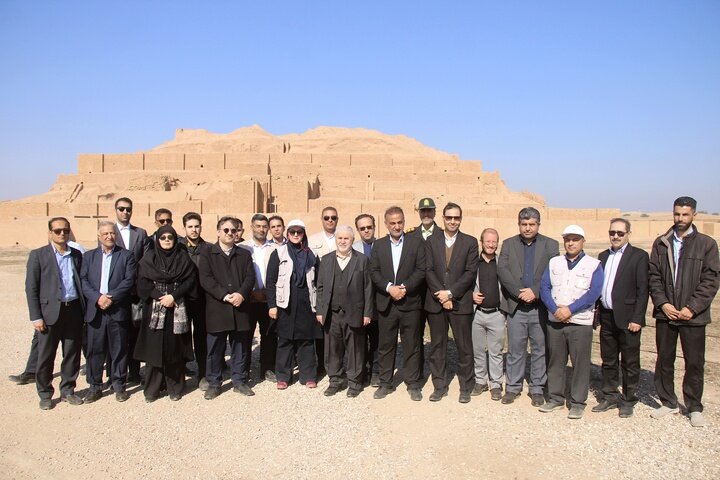INSUBCONTINENT EXCLUSIVE:
TEHRAN On Wednesday, Ali Darabi, Deputy Minister of Cultural Heritage and Tourism, went to the UNESCO-listed Tchogha Zanbil, a prehistorical
destroyed ziggurat in Khuzestan province as part of his main tour of heritage projects in the region.During his visit, Darabi was informed
on the most recent remediation and preservation efforts at the ancient site
Tchogha Zanbil was the very first Iranian monolith that was engraved on the UNESCO World Heritage List
Today, with 28 UNESCO-listed sites, Iran ranks among the worlds top 10 countries in cultural heritage, he stated.Describing the ziggurat as
a testimony to the architectural and city preparation ingenuity of ancient Iranians, Darabi highlighted its significance in highlighting the
lifestyle and achievements of early civilizations.Moreover, Atefeh Rashnoei, Director of the Tchogha Zanbil World Heritage Site, offered
insights into the sites historic value
This structure goes back to c
1250 BC, and some specialists believe its arches may have motivated later Roman rising methods, she explained.Darabi then stressed the value
of ongoing conservation efforts, noting that continuous restoration projects aim to preserve the integrity of the site for future
generations.Tchogha Zanbil, likewise called the Ziggurat of Dur-Untash, stands as a testament to the architectural sparkle of its time
It was made a UNESCO site in 1979
Its construction started in c
1250 BC upon the order of the Elamite king Untash-Napirisha (1275-1240 BC) as the spiritual center of Elam devoted to the Elamite divinities
Inshushinak and Napirisha.As mentioned by the UN cultural body, Tchogha Zanbil is the largest ziggurat beyond Mesopotamia and the best
preserved of this type of stepped pyramidal monument
Tchogha Zanbil was excavated in 6 seasons between 1951 and 1961 by Roman Ghirshman, a Russian-born French archeologist who concentrated on

